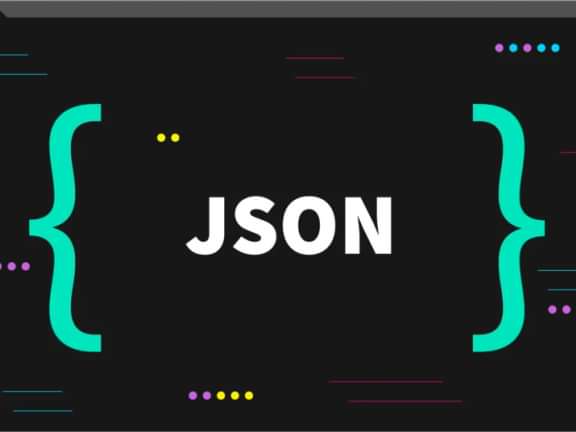How to Level Up Your Craft CMS Development Skills: Tips and Strategies for Success
Become a better Craft CMS Developer with these tips!
Be the best Craft CMS developer that you can be!
Craft CMS is an incredibly powerful and flexible platform that can help you build sophisticated, dynamic websites with ease. But like any tool, it takes time and practice to master. Whether you're just getting started with Craft CMS or you're a seasoned developer looking to take your skills to the next level, there are always new tips, tricks, and strategies to learn. In this blog post, we'll explore five key areas that can help you become a better Craft CMS developer, from mastering the basics to embracing best practices, engaging with the community, and more. Whether you're a freelancer, agency developer, or in-house team member, these tips will help you work more efficiently, create better sites, and stay ahead of the curve in the ever-evolving world of web development.
Learn the basics
Craft CMS is a robust platform that offers a wide range of features and capabilities. However, before you can start building more complex sites and applications, it's essential to master the basics of the platform. The first step is to familiarize yourself with Craft's core concepts, including entries, fields, sections, and templates.
An entry is the basic unit of content in Craft CMS. It represents a single piece of content, such as a blog post or product page. Entries are organized into sections, which define how they're displayed and organized on the site.
Fields are the individual pieces of data that make up an entry. For example, a blog post might have fields for the title, body text, author name, and publication date. Fields are created within a section and can be customized to meet your specific needs.
Templates are the files that define how your site's content is displayed to users. They're written in Twig, a flexible and powerful templating language that allows you to create dynamic, flexible layouts and display rules.
To master these core concepts, start by exploring the Craft CMS documentation, which offers in-depth guides, tutorials, and examples to help you get started. You might also consider taking a Craft CMS course or attending a workshop or meetup to connect with other developers and learn from their experiences.
Make Use of Craft CMS Plugins
Craft CMS's plugin ecosystem is one of its biggest strengths. With hundreds of plugins available to choose from, you can extend the platform's capabilities and add new functionality to your site with ease. From SEO optimization and form building to social media integration and e-commerce features, there's a plugin for just about every use case.
To make the most of Craft CMS's plugin ecosystem, start by exploring the official plugin directory, which offers a searchable and filterable list of plugins that have been tested and approved by the Craft team. You can also explore third-party plugin repositories or search for plugins directly within your Craft CMS control panel.
When evaluating plugins, be sure to read reviews and check out the plugin's documentation and support resources to ensure that it meets your needs and is compatible with your version of Craft CMS. You should also be mindful of any licensing or pricing requirements, as some plugins may require a paid subscription or license.
Once you've identified a plugin that meets your needs, installation is usually a straightforward process. Simply download the plugin file and install it through the Craft CMS control panel. From there, you can configure the plugin's settings and start using its features within your site.
Curious on where to start? Check out our favorite Craft CMS plugins here.
Use Twig Effectively
Twig is the templating language used by Craft CMS, and it's a powerful tool that can help you create dynamic, flexible templates for your site. To use Twig effectively, you'll need to familiarize yourself with its syntax, filters, and functions.
Twig's syntax is designed to be both human-readable and easy to write. It's based on a series of nested tags and blocks that define how your site's content is displayed. For example, a simple Twig template might include tags to output the page title, header image, and body text.
In addition to its basic syntax, Twig also includes a wide range of filters and functions that allow you to manipulate data and output it in various formats. For example, you can use filters to format dates, truncate strings, or capitalize text. You can use functions to generate URLs, output HTML, or perform more complex data manipulations.
To get started with Twig, check out the official Twig documentation, which includes a detailed reference guide and plenty of examples to help you get up to speed. You might also consider taking a course or attending a workshop to get hands-on experience with the language.
By using Twig effectively, you can create templates that are more flexible, dynamic, and customizable, allowing you to build more sophisticated sites and applications. Plus, because Twig is used across many different platforms, including Symfony and Drupal, mastering it can be a valuable skill for any web developer.
Embrace Best Practices
Craft CMS, like any platform, has its own set of best practices and conventions that can help you work more efficiently, collaborate more effectively, and avoid common pitfalls and issues. By embracing these best practices, you can improve the quality of your code, make it easier to maintain and update, and reduce the likelihood of errors and bugs.
Some best practices to consider when working with Craft CMS include:
- Using Git for version control: Version control is essential for keeping track of changes to your code over time and collaborating effectively with other developers. Git is a popular and widely used version control system that's well-suited to web development.
- Following a consistent file structure: Consistency is key when it comes to organizing your files and directories. By following a consistent file structure, you can make it easier to find and modify code, reduce the likelihood of errors and typos, and keep your project organized and tidy.
- Keeping templates and CSS organized: As your site grows and becomes more complex, it's important to keep your templates and CSS organized and maintainable. Consider using a CSS preprocessor like Sass or Less to help you write cleaner, more modular CSS, and use partials and includes to break up large templates into smaller, more manageable components.
- Writing efficient and optimized code: Finally, be mindful of writing efficient and optimized code. This means avoiding unnecessary database queries, minimizing the use of complex or nested loops, and reducing the amount of code that runs on each page load.
When it comes to Craft CMS development, following best practices and conventions is like having a secret weapon in your toolkit. By embracing these time-tested approaches, you'll be able to work more efficiently, streamline your workflow, and avoid common pitfalls and headaches. Plus, adhering to widely accepted standards and practices will make it easier to collaborate with other developers, contribute to open-source projects, and stay up-to-date with the latest developments in the Craft CMS community. So whether you're just getting started with the platform or you're a seasoned pro, don't overlook the importance of following best practices and conventions in your Craft CMS development work.
Engage with the Craft CMS Community
Craft CMS has a vibrant and supportive community of developers, designers, and enthusiasts who are passionate about the platform and eager to share their knowledge and experiences with others. By getting involved in the Craft CMS community, you can learn from other developers, get help with tricky issues, and stay up-to-date with the latest developments in the platform.
There are many ways to engage with the Craft CMS community. Here are just a few:
- Attend a local meetup or conference: Craft CMS meetups and conferences are a great way to connect with other developers and learn from their experiences. Check out the official Craft CMS events page to see if there's a meetup or conference happening in your area. If you are in Portland, OR make sure to attend CraftPDX!
- Join the Craft CMS Discord: The Craft CMS Discord channel is a bustling online community where developers can ask questions, get help with issues, and connect with other Craft CMS users from around the world. You can sign up for free and start chatting with other developers today.
- Take a Craft CMS course: There are many online courses and tutorials available that can help you improve your Craft CMS development skills. One popular resource is CraftQuest, a subscription-based learning platform that offers a wide range of courses, workshops, and webinars on Craft CMS and related technologies.
- Follow prominent Craft CMS developers: There are many prominent developers in the Craft CMS community who regularly share their insights, tips, and experiences on their blogs and social media accounts. One of the most well-known is Andrew Welch, the founder of nystudio107, a digital agency that specializes in Craft CMS development. Following developers like Andrew can help you stay up-to-date with the latest trends and best practices in the platform.
By engaging with the Craft CMS community, you'll be able to learn from other developers, get help when you need it, and stay up-to-date with the latest developments in the platform. Plus, you'll be able to connect with like-minded professionals who share your passion for Craft CMS and web development. So don't be shy - get involved and start making connections today!
Craft Your Path to CMS Success
Craft CMS is a powerful and flexible platform that can help you build amazing websites and applications with ease. Whether you're just getting started with the platform or you're a seasoned pro, there are always new tips, tricks, and strategies to learn that can help you take your development skills to the next level. By mastering the basics, making use of plugins, using Twig effectively, embracing best practices, and engaging with the community, you'll be well on your way to becoming a Craft CMS ninja.
So what are you waiting for? Start exploring the Craft CMS ecosystem today and see what you can create. And remember, the key to success is to keep learning, experimenting, and collaborating with other developers along the way. With the right mindset and approach, there's no limit to what you can achieve with Craft CMS. Happy crafting!
Continue reading.
The Element API plugin is a very powerful tool that you can use for quickly exposing your data structures to an external source.
Find out moreHere at Brilliance, we LOVE CraftCMS. Our clients love it as well.
Find out moreA brief introduction to consensus mechanisms and why proof of stake is the right move for Ethereum.
Find out moreLet's chat about your project
Portland, OR 97215



